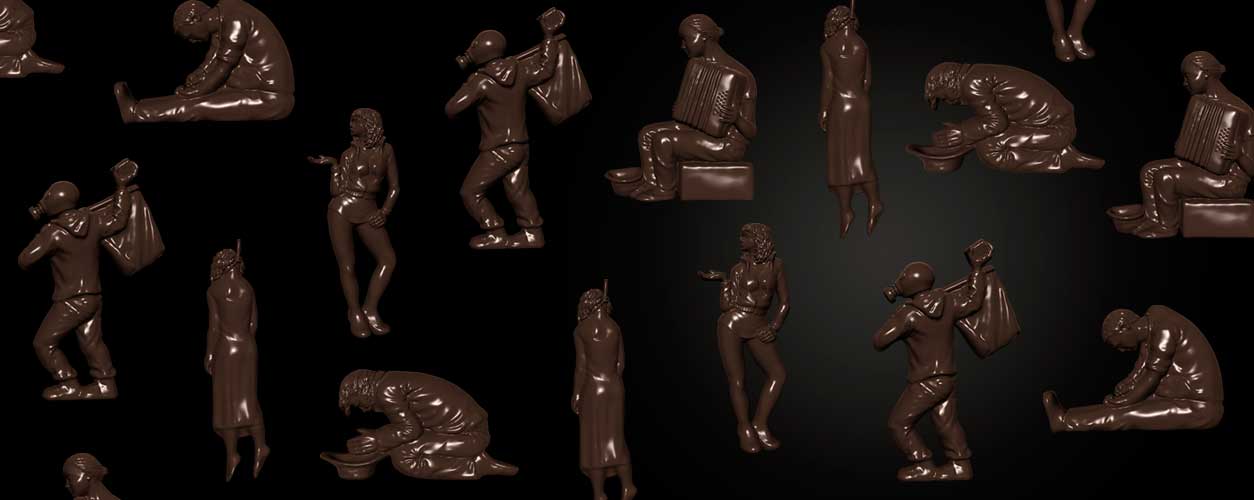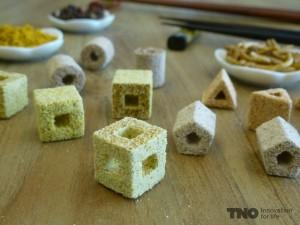We live in a time period where we are more dependent, than ever before on outside sources for nearly everything. People have begun to look at activities that would have been performed easily 100 years ago as near miracles of creation. The fact that I can crochet a blanket or that my husband can build bookshelves is something that many of our friends admire rather than assuming are natural parts of a person’s daily lives. The materials and technologies that we use have put many common goods out of the reach of home production – whether we are talking about plastic storage containers or LED alarm clocks, we must buy these things and are at the mercy of their purveyors. 3D printing has brought back the idea that individuals might be able to become makers once again.
3D printing is so alluring because of the power it puts in the hands of the user. Part of this is a misunderstanding about what 3D printing requires. Most people forget that in making there is a lot more than just wanting an end product. Sure, with a 3D printer, a plastic bowl can be made; this does not mean that anybody can use it to do so. This isn’t psychic technology; akin to the way that food was produced on the Starship Enterprise. It isn’t magic. However, precisely because it isn’t magic it can be learned, as any woodworking or crocheting technique could be. And learning it could place the power of making in the hands of individuals on a level that hasn’t been seen in the last 50 years.
As a result of the enthralling nature of 3D printing, everything is being 3D printed. I don’t mean that everything that is made is being made with 3D printers. I mean that we are experimenting with everything that can be put through the 3D printing process. We have grown accustomed to new things being created with these machines from shoes to ears. Even the idea of 3D printing food no longer seems bizarre. So, when I read that the Slovenian artist Saso Sedlacek was printing chocolate, I probably wouldn’t have looked twice except that I was hungry and I had heard he was doing it as a means of protest.
The miniature chocolate sculptures that Sedlacek has created are beautiful. Each one is a small figure of a societal outsider: a beggar, a busker with an accordion, a drug addict, a prostitute, and a hanged woman. The idea being that those who can purchase the chocolates are thereby symbolically eating those that they have exploited. In your face Mr. or Mrs. Capitalist! Right? Setting aside arguments about whether prostitution is liberation or oppression, the agency of the busker (something I spent several years doing), and Camus’ argument that suicide is the ultimate act of resistance, it’s cutely ironic.
But how edgy is it anymore to point out that the few are living on the backs of the many? After all, you can’t be blacklisted by McCarthy these days. There is something beyond simple criticism of oppression in his message though. As a good Marxist, it wouldn’t be complete without a critique of the modes and means of production. Sedlacek’s worry is that:
“Thanks to the affordability of 3D-printing technology, we can now print at home things and objects that, until recently, we had to buy in a physical or online store. However, one must ask what will happen to the intermediate line of producers, transporters, storekeepers, salespeople, etc. What does this mean for the future of an entire chain of people who are now active in the exchange of goods?”
While it is true that there are moments in which it might be wise to be a Luddite and that technological advancement has not, and never will, bring with it the unrivaled glory, Sedlacek seems to have just slightly missed the point. He argues that this technology will allow people to create things in their own homes, thereby rendering superfluous the current workforce that enables in store or online purchases. This critique seems oddly misplaced, at least in the United States, when you consider that these stores are already appropriating the goods and labor of a group that is not benefiting from current production regimes.
The very democratization of this technology and the capacity to create may be the only hope left for breaking the monopoly that large scale manufacturers have over nearly all economic exchange. Yes, the person who fills orders at Walmart.com might not have a job doing that anymore. However, they might be able to engage in the creation of both, and use and exchange value with other individuals rather than relying on a minimal amount of compensation for the work done to earn enormous profits for a corporate entity. It is possible that the engines of exchange might once again be locally driven and the benefits therefore locally, and more equitably, distributed than we have seen in the last century.
When William Morris founded what would come to be known as the Arts and Crafts movement, his idea was to reconnect people with craft and creation, rather than for them to serve as cogs in a machine. He believed that through making, a person regained lost authority and that many of the ills of the Victorian world, brought on by industrialization, could be overcome with a return to the way those things were once done. Unfortunately, because each piece of furniture his workshop made by hand took so much longer to make than those made on an assembly line, their price put them out of reach to all but the wealthiest members of society. As 3D technologies move forward, one thing they consistently reduce is the amount of time necessary for creation. Maybe this is what was missing from Morris’ revolutionary efforts.
I would argue that it is never possible, nor is it desirable, to return to the past. However, if ever there has been an opportunity to bring the good of the past together with the good of the present in order to work toward a desired future it lies in new technologies that can succeed where Morris did not. The real question is whether 3D creation technologies come to be used to replace people or whether the people can use them to replace the monopoly. The technology is not so inexpensive at this point that Sedlacek’s beggars could be buying machines, but by pushing the boundaries of the owner class to include a much wider segment of the population we may begin to regain some of the autonomy that we have ceded.
With diminished dependence on faceless entities for exchange there is the possibility, albeit remote, that we might also start to remember that the brilliance and creativity of humanity means we do not have to accept enslavement. Let us know your opinion on Saso Sedlacek’s work, and the ideology behind it all, in the 3D printed chocolate forum thread at 3DPB.com.
Subscribe to Our Email Newsletter
Stay up-to-date on all the latest news from the 3D printing industry and receive information and offers from third party vendors.
You May Also Like
3D Printing Unpeeled: New Arkema Material for HP, Saddle and Macro MEMS
A new Arkema material for MJF is said to reduce costs per part by up to 25% and have an 85% reusability ratio. HP 3D HR PA 12 S has been...
3D Printing News Briefs, January 20, 2024: FDM, LPBF, Underwater 3D Printer, Racing, & More
We’re starting off with a process certification in today’s 3D Printing News Briefs, and then moving on to research about solute trapping, laser powder bed fusion, and then moving on...
3D Printing Webinar and Event Roundup: December 3, 2023
We’ve got plenty of events and webinars coming up for you this week! Quickparts is having a Manufacturing Roadshow, America Makes is holding a Member Town Hall, Stratafest makes two...
Formnext 2023 Day Three: Slam Dunk
I’m high—high on trade show. I’ve met numerous new faces and reconnected with old friends, creating an absolutely wonderful atmosphere. The excitement is palpable over several emerging developments. The high...

































